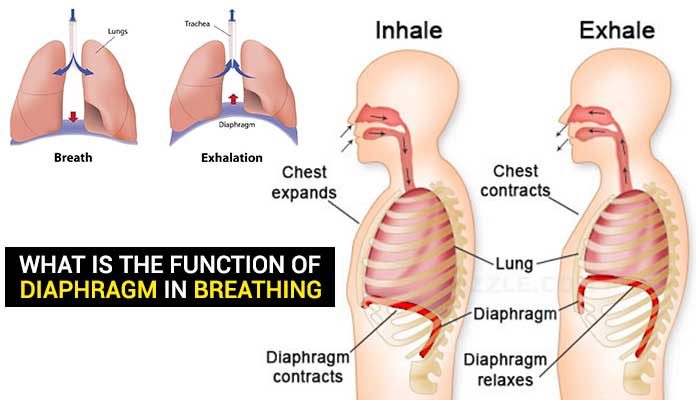We think breathing process to be so simple, as it only requires the exhaling and inhaling of air. Well, this is not the case in reality, and there is a lot much anatomical effort involved in pushing the oxygen inside of lungs. The process doesn’t merely include the lungs, windpipe, and taking the air inside through the nasal cavity or mouth. It necessarily involves the diaphragm located within the ribcage.
One doesn’t need to be a biology student or belong to the field of medicine to know the function of the diaphragm in breathing. Such knowledge is essential for everyone to take universal precautions to cure the breathing disorders
Where is Diaphragm Located?
The diaphragm is the primary muscle that aids in respiration and separates the abdominal cavity from the thoracic cavity. It is dome-like in shape and located inside the rib-cage under the ribs. The muscle is attached to the ribcage, sternum and spinal cord. Many people confuse it with ribcage which also looks more or less like a dome. But, it is a muscle which supports respiration by contracting and relaxing.

How Does Diaphragm work?
It is evident that Diaphragm pushes the air into and out of the lungs. But how? The answer is a bit tricky but exciting and follows a sequence of events. Upon contraction, diaphragm shrinks and flattens to the floor. In this way, it creates more space for the air and suction which then pushes the air into the lungs.
Upon relaxation diaphragm again assumes the dome shape and lessens the space for air, thus aiding the process of exhalation.
For simplicity, we can say that contraction aids in inhalation and relaxation aids in exhalation.
Other functions
Interestingly diaphragm doesn’t help in breathing only. Its involuntary contraction and relaxation also lead to what we call hiccups. Hence, next time, when you face hiccups, keep in mind that your respiratory system is equally taking part as long as the digestive system.
Apart from this, this chest cavity muscle also aides in vomiting, urination, and passing of feces. Briefly, its contraction and relaxation help push the matter outside and inside of the body.
We all know how various yoga postures are useful for weight loss. Those who practice the basic yoga posture like holding the breath by sitting cross-legged on the floor must know how to engage the diaphragm effectively.


